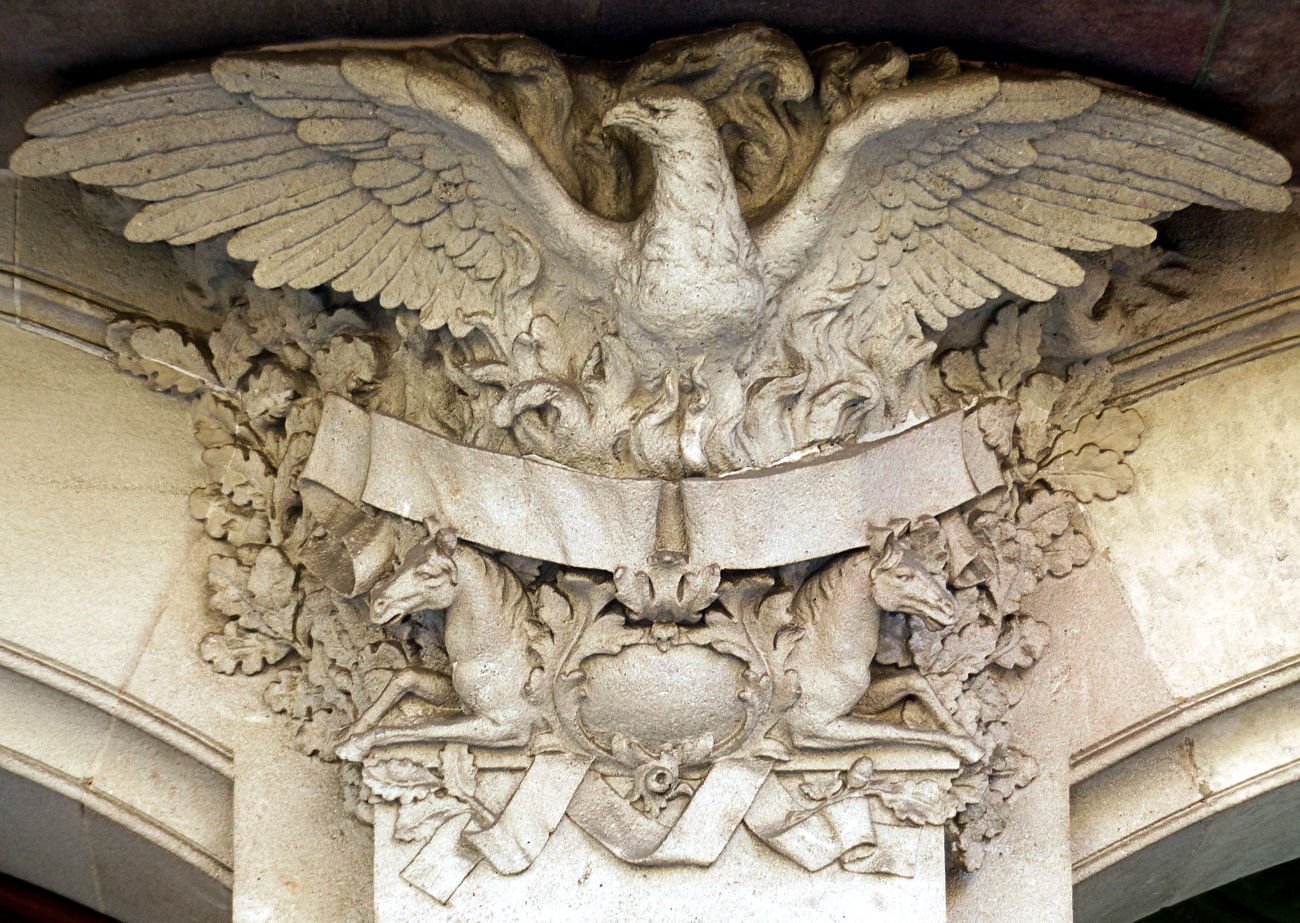#1675. Heraldic relief with eagle on the facade of a historical building
The image captures an impressive architectural element of a facade — a richly decorated stone relief representing a heraldic composition. At the center is a majestic eagle with outstretched wings, positioned above a shield or cartouche. This decorative facade composition is executed in a classical style with baroque elements, emphasized by the luxuriance of forms and dynamism of lines.
The sculptural relief demonstrates mastery of stone carving art: all details are meticulously crafted — from the eagle's plumage to the floral motifs of the framing. Flanking the shield are figures resembling heraldic animals, possibly horses or unicorns, indicating the aristocratic origin of the symbolism. The ribbon or scroll above the shield was likely intended for a motto.
Such architectural embellishments are characteristic of official buildings, palaces, or aristocratic mansions from the 18th-19th centuries. In modern facade design, similar elements can be adapted as more restrained reliefs or stylized coats of arms, giving buildings individuality and historical depth. When restoring or stylizing a facade in a classical style, it's important to consider the proportions and correspondence of decorative elements to the overall architectural concept.
